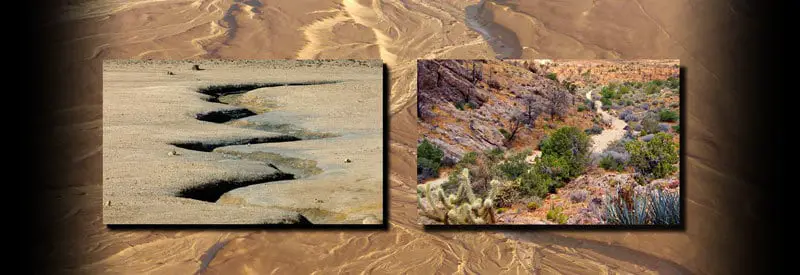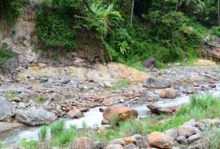
Citizen science monitoring activities will be at your own risk, so please take care around traffic and livestock, wear suitable clothing and footwear for the weather and terrain, and do not be tempted into the water or onto private property. Intermittent streams may dry up for some period of.
#Ephemeral stream how to
Visit the CrowdWater website for information on how to use the app.īE SAFE. Intermittent rivers and Ephemeral Streams (IRES) are river water bodies characterised by temporary flow.

Both ad hoc and more regular observations are welcome, and details of how to get started are in the below guidance document.
#Ephemeral stream android
A mobile phone app for this purpose, CrowdWater, developed by SPOTTERON for the University of Zurich, is freely available for download on both iOS and Android and quick and easy to use. This summer, a coordinated citizen science initiative is being launched in the UK and across Europe, to record observations of flow state on intermittent rivers and ephemeral streams. Each of these states has the potential to be an important habitat, but on most rivers, we don’t know if, when or where they occur. Furthermore, when flow stops, we might see dry river bed, or perhaps a transition involving wet bed, ponding, trickling water or standing water. But many rivers stop flowing in places where there is no gauging station, say at the top, or in the middle, and those reaches may stop flowing at different times, perhaps only in the autumn, and for months or even years at a time. The NRFA holds daily flow data for over 1500 gauging stations, and around 1 in 10 of these have recorded at least one interruption to flow since they were installed. It’s also a challenge for environmental regulators, responsible for protecting our rivers and managing the impact of human activities. The lack of data is a problem for scientists – including hydrologists and ecologists – wanting to understand how rivers like these respond to natural pressures like drought and flooding, and to human pressures like climate change and abstraction. In Arizona, approximately 95 of total stream miles are ephemeral.1 Other Arizona waters. In its place, Ohio EPA has issued a 2022 Level 1 Isolated Wetland General Permit, which governs impacts to those wetlands that are not federally jurisdictional but continue to be regulated under state law.Do you know of a river or stream that sometimes stops flowing? Have you ever wondered when, where and why it stops, or what the damage might be? Scientists and environmental regulators are looking for answers to the same questions, but there is a problem. Ephemeral streams flow during and after precipitation events. Ohio EPA also issued Findings and Orders (effective July 21, 2022) terminating Ohio EPA’s Level 1 Isolated Wetland and Ephemeral Stream General Permit, which previously authorized impacts to those ephemeral streams that were not federally jurisdictional but were regulated under state law. Wetlands are often associated with these stream systems.

They serve many of the same ecological roles as larger downstream sections. These are called intermittent streams and ephemeral streams, and are very important to the health of the downstream waters. To aid applicants for Section 401 Water Quality Certifications proposing impacts to ephemeral streams, Ohio EPA has issued a Guidance Document as well as an Ephemeral Stream Mitigation Calculator. transmission losses hydrograph characteristics water yield magnitude of transmission losses in ephemeral streams having coarse textured beds. Almost 60 of streams in the US only flow seasonally or after storm events 1. The new provisions further set forth five mitigation options for permanent impacts to ephemeral streams and provide detailed restoration requirements for temporary impacts to ephemeral streams. The area of mitigation required is determined by a calculation that considers both the width of the streamway and the slope of the stream. Army Corps of Engineers and impacted above 3/100 acres (1,306 square feet).

Ohio’s mitigation requirements apply only to streams classified as jurisdictional by the U.S. For those ephemeral features that are federally jurisdictional, Ohio law now sets forth best management practices (BMPs), mitigation and restoration requirements, performance standards, and monitoring and reporting requirements to be included in Ohio EPA’s issuance of Section 401 Water Quality Certifications. With this legislation, the definition of “Waters of the State” set forth in Ohio law was changed to now exclude those ephemeral features that are not also federally jurisdictional, as determined by the U.S. How to determine whether a watercourse is a river, ephemeral flow path, highly modified river or stream or artificial watercourse: A guidance note for. The new law is the result of House Bill 175, which was passed by the Ohio General Assembly on April 6, 2022. On July 21, 2022, new Ohio law governing regulation of ephemeral streams went into effect.


 0 kommentar(er)
0 kommentar(er)
